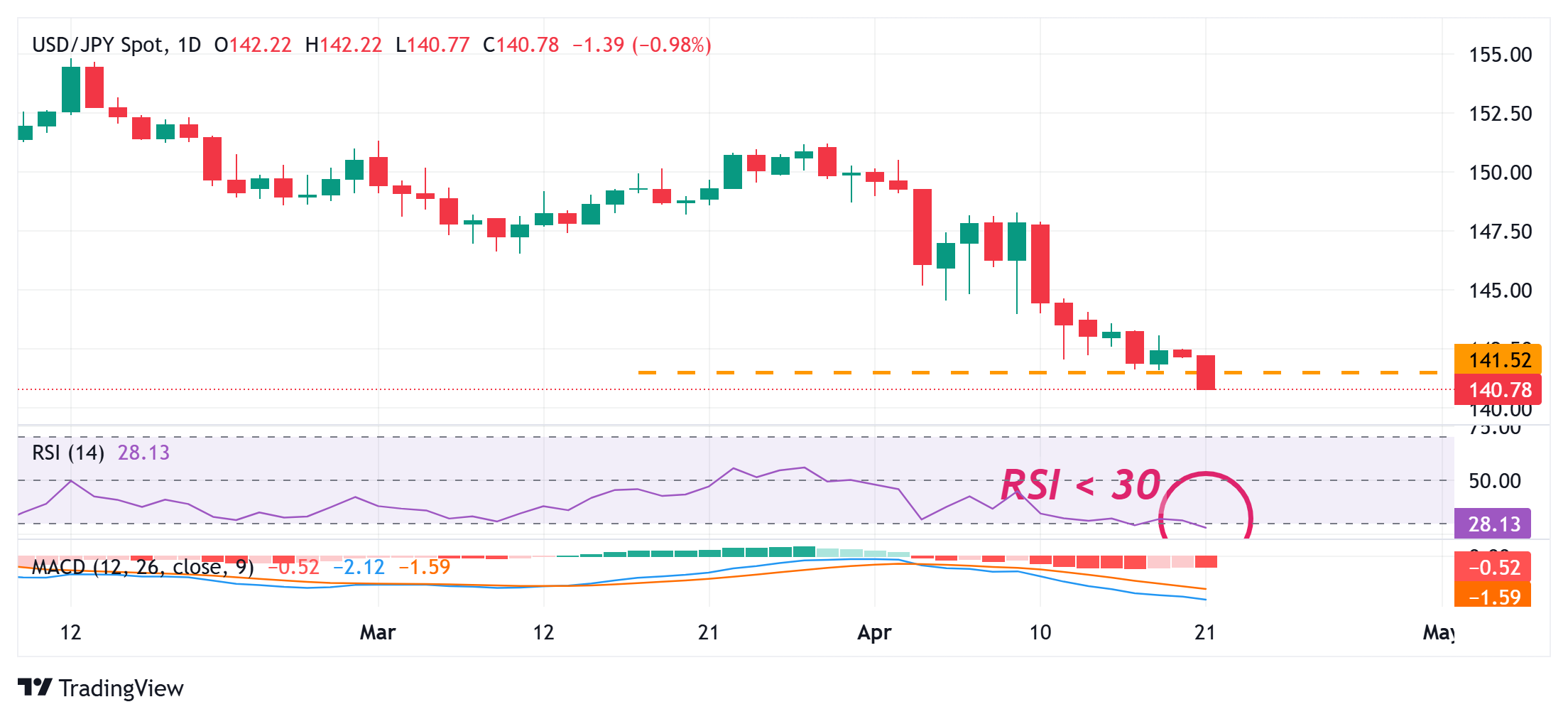-
The Japanese Yen maintains its appeal as a safe-haven asset amid ongoing trade uncertainties.
-
Diverging policy expectations between the BoJ and Fed also contribute to the decline in the USD/JPY pair.
-
Overbought conditions on the daily chart suggest caution for JPY bulls in the near term.
The Japanese Yen (JPY) continues to maintain its bullish momentum against the broadly weaker US Dollar (USD) as it approaches a multi-month high on Monday. Trade concerns, particularly fears that an escalating trade war could trigger a global recession, are weighing heavily on investor sentiment, thereby driving demand toward the safe-haven JPY. Additionally, optimism surrounding the ongoing US-Japan trade talks further supports the Yen.
A key factor in this shift is Japan's core inflation, which accelerated in March, signaling potential for more interest rate hikes by the Bank of Japan (BoJ). This contrasts with expectations that the Federal Reserve (Fed) may soon resume its rate-cutting cycle, contributing to the USD’s decline to its lowest level since April 2022. As a result, the lower-yielding JPY benefits from the Fed’s dovish stance, though slightly overstretched conditions on the daily chart advise caution for JPY bulls.
Japanese Yen Gains Support from Trade Tensions, US-Japan Trade Deal Prospects, and BoJ Rate Hike Expectations
- Investor unease surrounding US President Donald Trump’s unpredictable tariff policies continues to bolster demand for safe-haven assets, including the Japanese Yen. Recent statements from the new US ambassador to Japan have fueled optimism for a US-Japan trade deal, while Japan’s Prime Minister Shigeru Ishiba has expressed hopes that these tariff talks could serve as a model for US negotiations with other countries. Ishiba’s stance on seeking fairness in currency discussions and his flexibility on US accusations related to Japan’s automobile market further enhance expectations of a potential trade agreement.
- BoJ Governor Kazuo Ueda’s comments also support the Yen’s strength, signaling that the central bank may pause its rate hikes if US tariffs harm Japan’s economic recovery. However, Ueda also emphasized that Japan's real interest rates remain very low, leaving the door open for further rate hikes if inflation and economic growth align with projections.
- In line with this, Japan’s core Consumer Price Index (CPI) accelerated to 3.2% YoY in March, signaling broadening inflation that could prompt further rate hikes by the BoJ. In contrast, the market largely disregarded hawkish remarks from Federal Reserve Chair Jerome Powell and instead focused on expectations that the US central bank will resume its rate-cutting cycle in June. This divergence between the Fed and BoJ's policies continues to pressure the USD, pushing the USD/JPY pair below the 141.00 level for the first time since September 2024.
USD/JPY Faces Risk of Further Decline Below 140.00

From a technical perspective, the USD/JPY pair appears vulnerable to further declines. The daily Relative Strength Index (RSI) suggests slightly oversold conditions, signaling that caution is needed for bearish traders. A period of near-term consolidation or a modest bounce might occur before the downtrend resumes.
In the short term, any attempts at recovery could face resistance in the 141.60-141.65 range, followed by the 142.00 round figure and the 142.40-142.45 region. A breakthrough above these levels could trigger a short-covering rally, lifting the USD/JPY pair towards the 143.00 mark.
On the downside, a sustained break below the 141.00 mark would likely act as a fresh bearish signal, with the next support levels at 140.45-140.40. A further slide could expose the psychological 140.00 level, followed by a potential extension towards the 2024 yearly low around 139.60-139.55.





